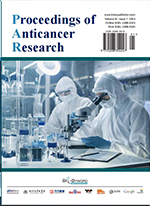Abstract
Objective: To comprehend the clinical characteristics and treatment approaches for children and adolescents in Qinghai Province with two types of echinococcosis, cystic echinococcosis (CE) and alveolar echinococcosis (AE). Methods: A total of 128 pediatric inpatients with echinococcosis at the People’s Hospital of Qinghai Province and the Clinical Research Institute of Echinococcosis of Qinghai Province between January 2016 and December 2021 were chosen as subjects. Demographic and clinical data were collected, and double data entry was executed using EpiData 3.02. Factors influencing the cure of echinococcosis were analyzed with echinococcosis cure as the dependent variable, employing statistical analysis via SPSS 19.0. Results: Of the cases, 35.9% had CE, and 64.1% had AE. Both types were observed in patients of all ages, with the majority aged 13–18. The number of cysts and their sizes varied between CE and AE. Complications were prevalent, including liver, gallbladder, lung, and nutritional complications. Univariate analyses revealed significant differences in outcomes based on factors such as cyst size (for CE), liver function grade (for AE), hydatid hypersensitivity test, operation, and length of hospital stay (P < 0.05). Conclusion: This comprehensive analysis of hospitalized cases sheds light on the clinical data of echinococcosis in children and adolescents in Qinghai Province. The findings contribute to a scientific foundation for formulating effective prevention and control measures tailored to this demographic, facilitating an improved understanding of echinococcosis in Qinghai province.
References
Zeng XM, Guan YY, Wu WP, 2014, Distribution Characteristic of Echinococcosis. Chinese Journal of Zoonoses, 30(4): 413–417.
Kobayashi T, Ebata T, Yokoyama Y, et al., 2017, Study on the Segmentation of the Right Anterior Sector of the Liver. Surgery, 161(6): 1536–1542. https://doi.org/10.1016/j.surg.2016.12.020
Zhang J, Han X, Lei W, et al., 2016, Investigation on the Current Knowledge of Echinococcus Prevention Among Students in Qinghai Province. Chinese Journal of Schistosomiasis Control, 28(5): 578–580.
Monge-Maillo B, Olmedo Samperio M, Perez-Molina JA, et al., 2019, Osseous Cystic Echinococcosis: A Case Series Study at a Referral Unit in Spain. PLoS Negl Trop Dis, 13(2): e0007006. https://doi.org/10.1371/journal.pntd.0007006
Zhang JN, Han XM, Wang YP, et al., 2017, The Effect Factors Analysis of Echinococcosis in Qinghai Province. Chinese Journal of Endemiology, 36(12): 907–911.
National Health and Family Planning Commission of China, 2017, Diagnosis and Treatment of Hydatidosis (2017 Edition), viewed September 10, 2019, http://www.nhc.gov.cn/yzygj/s3594q/201706/242fa472d0a243d7a72bf0560c0fd316
Chinese College of Surgeons (CCS) Chinese Committee, 2019, Expert Consensus on the Diagnosis and Treatment of Hepatic Cystic and Alveolar Echinococcosis (2019 Edition). Chinese Journal of Digestive Surgery, 18(8): 711–721.
Roberta N, Marcello M, Christine MB, et al., 2016, Costs Associated with Surgically Treated Cases of Abdominal Cystic Echinococcosis: A Single Center’s Experience from 2008 to 2014, Pavia, Italy. Am J Trop Med Hyg, 95(2): 405–409. https://doi.org/10.4269/ajtmh.16-0187
Zhang C, Lin R, Li Z, et al., 2020, Immune Exhaustion of T Cells in Alveolar Echinococcosis Patients and Its Reversal by Blocking Checkpoint Receptor TIGIT in a Murine Model. Hepatology, 71(4): 1297–1315. https://doi.org/10.1002/hep.30896
Thomas MN, Zwingelberg S, Angele M, 2017, Diagnosis and Treatment of Cystic and Alveolar Echinococcosis. MMW Fortschr Med, 159(14): 38–42. https://doi.org/10.1007/s15006-017-9948-z
Wen H, Vuitton L, Tuxun T, et al., 2019, Echinococcosis: Advances in the 21st Century. Clin Microbiol Rev, 32(2): e00075-18. https://doi.org/10.1128/CMR.00075-18
Qiu Y, Yang X, Shen S, et al., 2019, Vascular Infiltration-Based Surgical Planning in Treating End-Stage Hepatic Alveolar Echinococcosis with Ex Vivo Liver Resection and Autotransplantation. Surgery, 165(5): 889–896. https://doi.org/10.1016/j.surg.2018.11.007
Shen S, Qiu Y, Yang X, et al., 2019, Remnant Liver-to-Standard Liver Volume Ratio Below 40% is Safe in Ex VivoLiver Resection and Autotransplantation. J Gastrointest Surg, 23(10): 1964–1972. https://doi.org/10.1007/s11605-018-4022-4
Yang X, Qiu Y, Huang B, et al., 2018, Novel Techniques and Preliminary Results of Ex Vivo Liver Resection and Autotransplantation for End-Stage Hepatic Alveolar Echinococcosis: A Study of 31 Cases. Am J Transplant, 18(7): 1668–1679. https://doi.org/10.1111/ajt.14621
Wang TP, Cao ZG, 2018, Current Status of Echinococcosis Control in China and the Existing Challenges. Chinese Journal of Parasitology and Parasitic Diseases, 36(3): 291–296.
Fu SQ, Wang ZX, Wang HJ, et al., 2019, Clinical Characters of 175 Echinococcosis Cases. Chinese Journal of Schistosomiasis Control, 31(2): 204–209.
Aliakbarian M, Tohidinezhad F, Eslami S, et al., 2018, Liver Transplantation for hepatic Alveolar Echinococcosis: Literature Review and Three New Cases. Infect Dis (Lond), 50(6): 452–459. https://doi.org/10.1080/23744235.2018.1428823
Aji T, Dong JH, Shao YM, et al., 2018, Ex Vivo Liver Resection and Autotransplantation as Alternative to Allotransplantation for End-Stage Hepatic Alveolar Echinococcosis. J Hepatol, 69(5): 1037–1046. https://doi.org/10.1016/j.jhep.2018.07.006
Koch S, Bresson-Hadni S, Miguet JP, et al. 2003, Experience of Liver Transplantation for Incurable Alveolar Echinococcosis: A 45-Case European Collaborative Report. Transplantation, 75(6): 856–863. https://doi.org/10.1097/01.TP.0000054230.63568.79
Xu S, Dang ZS, Zhang HB, et al., 2018, Research Progress on Drug Treatment for Hydatidosis. Chinese Journal of Parasitology and Parasitic Disease, 36(3): 297–302.
Liu KX, Zhang W, Jin ZH, et al., 2020, Analysis on Safety of Albendazole in the Treatment of Echinococcosis. Chinese Journal of Parasitology and Parasitic Disease, 38(3): 354–359.
